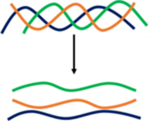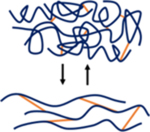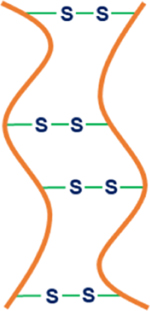Table 2. Polypeptide-based biopolymers.
Representative structures, function, and sources of various polypeptide biopolymers that have been modified to form biomedical hydrogels.
| Polypeptides | |||||
|---|---|---|---|---|---|
| Name | Gelatin | Silk Fibroin | Albumin | Elastin | Keratin |
| Structure |

|

|

|

|

|
| Contains RGD motif for cell adhesion | Contains sequences that form crystalline β-sheets | Heart shaped, globular protein | Contains hydrophobic domains (i.e., VPGXG) for mechanical resilience | Contains high cysteine content for disulfide bond formation | |
| Native function | Denatured derivative of collagen (structural component of mammalian ECM) | Structural component of silk fibers produced by some arthropods | Modulates fluid distribution and provides oncotic pressure in blood plasma | Responsible for recoiling response when stress is applied in vertebrate connective tissue | Structural and protective component of hard tissues such as skin, hair, nails, horns, wool, feathers, and hooves |
| Source for biomedical applications | Animal sources (e.g., porcine skin)63 | Bombyx mori (silkworm)73 | Human (HSA) or bovine (BSA) blood plasma82 | Human donors or animal sources (e.g., bovine, murine)91 | Human hair,98 animal sources (e.g., feathers, wool)99,100 |
